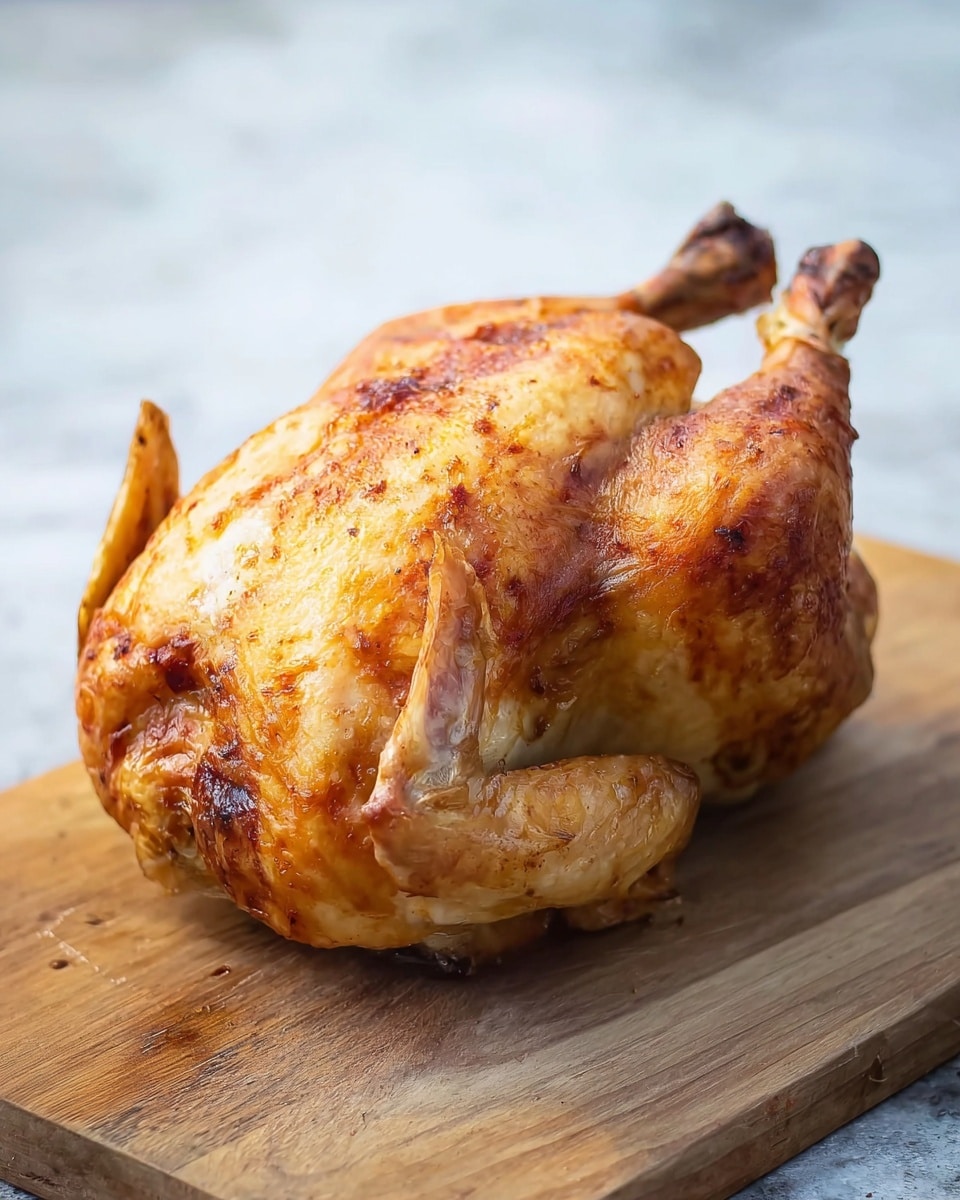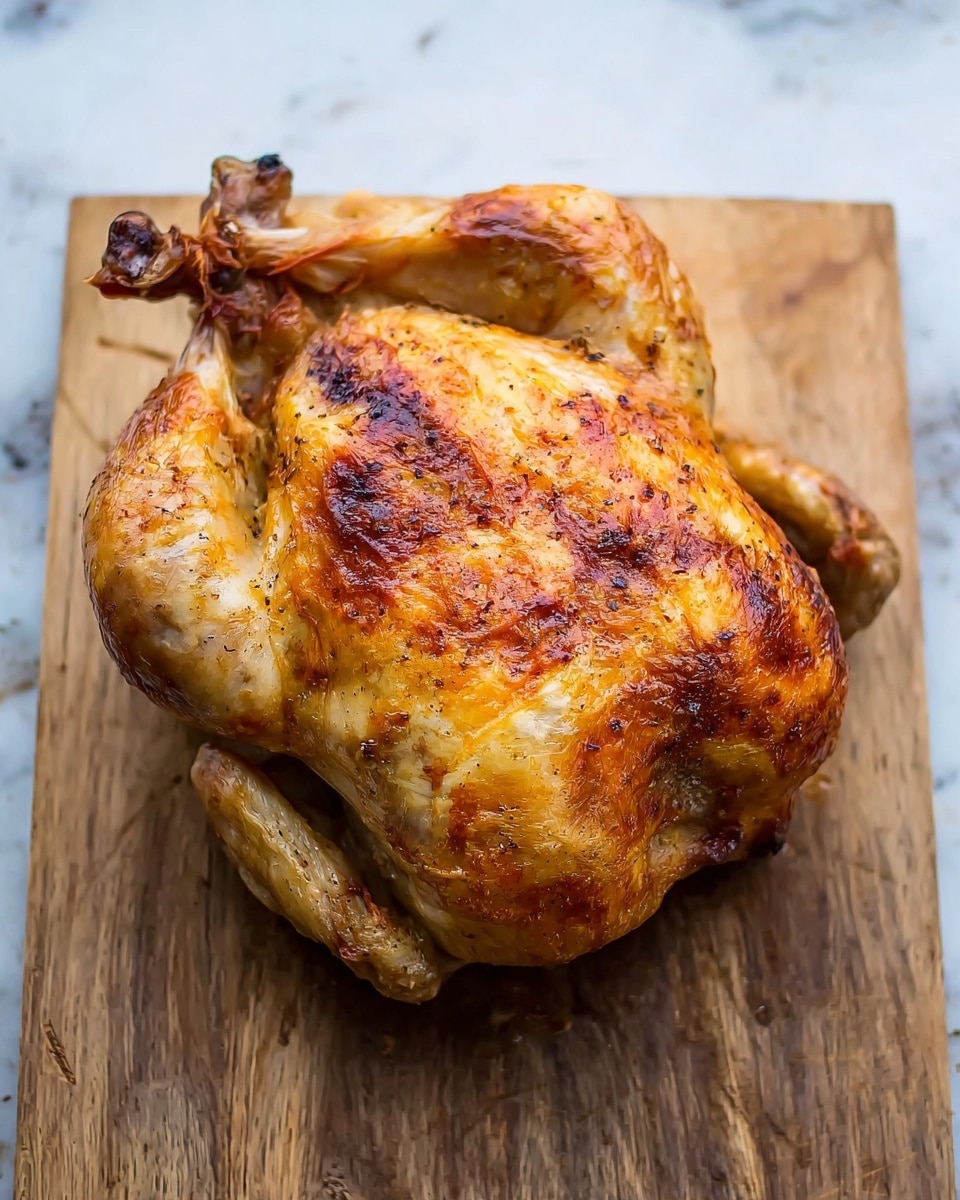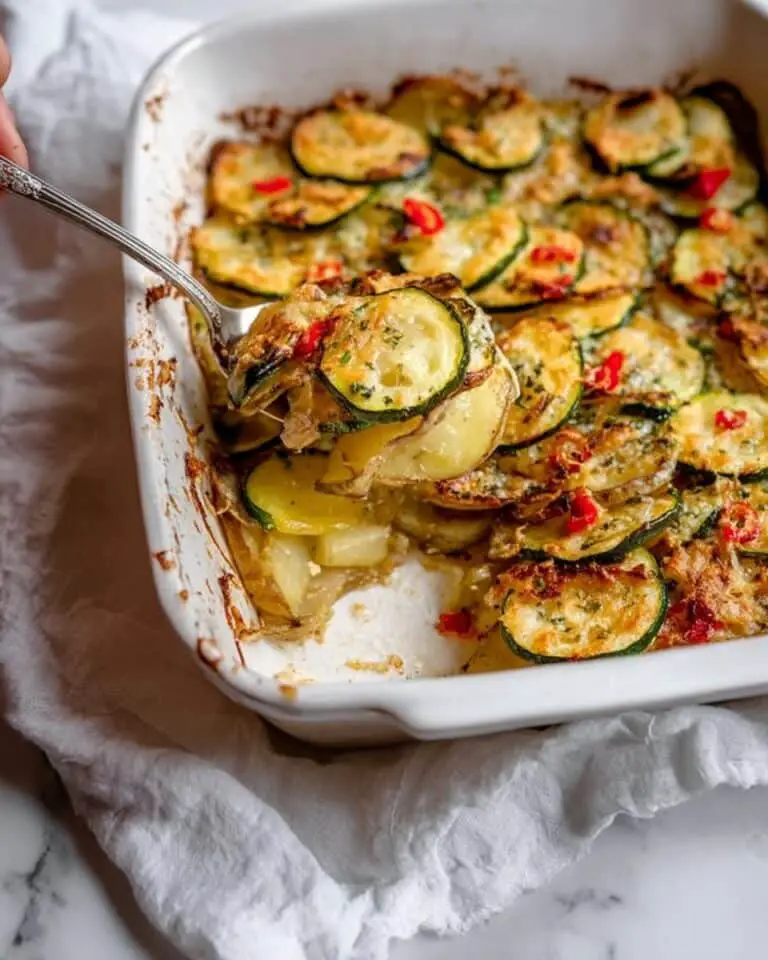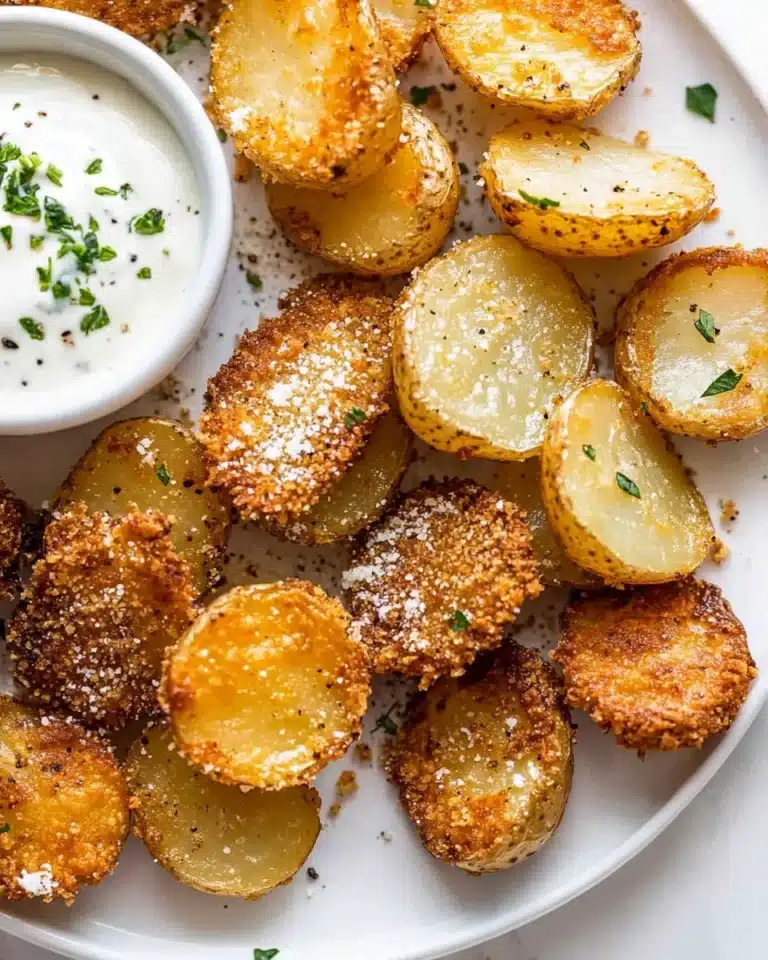If you’re like me and love crispy, juicy turkey with a little southern flair, then you’re in for a treat with this Basic Deep-Fried Turkey Recipe. It might sound intimidating, but trust me, it’s fan-freaking-tastic and worth every second and bit of effort. When I first tried deep-frying a turkey, I was hooked because nothing beats that crackling skin paired with perfectly tender meat underneath. Stick around, and I’ll walk you through every step like we’re cooking side by side in the kitchen—or backyard!
Why You’ll Love This Recipe
- Juicy, Tender Meat: Deep frying seals in all those delicious juices, transforming your turkey into a tender masterpiece every time.
- Crispy Skin That Pops: The ultra-hot oil creates a perfectly crispy skin that adds amazing texture and flavor.
- Quick Cooking Time: You’ll save hours compared to roasting—a whole turkey in about 30 minutes!
- Simple Ingredients, Big Flavor: Just turkey, peanut oil, and some salt and pepper and you’re ready for an impressive meal.
Ingredients You’ll Need
These three ingredients might seem basic, but they’re the foundation of a stunning deep-fried turkey. I always start with a fresh or fully thawed turkey to make sure it fries up perfectly.
- Turkey: I suggest about 12 pounds, giblets removed, and completely dry—this is key for safety and great frying results.
- Peanut oil: This oil handles high heat well without smoking or overpowering the turkey’s flavor.
- Kosher salt and fresh black pepper: Simple seasoning goes a long way, and I like to add these right after frying while the turkey is still hot.
Variations
While this basic deep-fried turkey recipe is terrific as is, I love playing around with flavors and techniques depending on the occasion. Feel free to make it your own—you’ll find it’s incredibly versatile!
- Seasoned Brine: I once marinated the turkey overnight in a simple saltwater brine with garlic and herbs, which boosted juiciness and added subtle depth.
- Spice Rub: Sometimes I mix cayenne, smoked paprika, and garlic powder into the salt and pepper seasoning for a smoky, spicy crust that my family adores.
- Oil Alternatives: If peanut oil isn’t your go-to, you can use another high smoke point oil like canola or sunflower, although peanut oil gives the best flavor.
- Smaller Birds: Trying this method on a smaller turkey or large chicken is also doable—just adjust cooking times accordingly.
How to Make Basic Deep-Fried Turkey Recipe
Step 1: Prepare Your Turkey
First up, make sure your turkey is fully thawed and completely dry—this can’t be stressed enough because any moisture will cause dangerous oil splatters. Remove the giblets and pat down every nook and cranny with paper towels until bone dry. For safety, I usually set my turkey aside after drying to air-dry a bit more. Also, remove any plastic or metal tags.
Step 2: Measure Oil Displacement
If you’re using an outdoor fryer setup, here’s a cool trick I picked up: Place your turkey in the empty fryer pot and fill it with water until the bird is just submerged. Mark or note that water level so you know exactly how much oil to add. Remove the turkey and dry everything thoroughly before pouring in the oil—this prevents spills and overflow.
Step 3: Heat the Oil
Heat your peanut oil to about 350°F (177°C). Use a reliable thermometer so you can monitor the temperature precisely. I learned to never leave the oil unattended—it heats fast, and maintaining consistent temp between 325°F and 350°F during frying is crucial for even cooking and safety.
Step 4: Lower the Turkey Slowly
This step really demands patience. Turn your gas or heat source off completely, then slowly and carefully lower the turkey into the hot oil—take at least 90 seconds for this process. Doing it too quickly can cause dangerous oil overflow and splatter. Once submerged, reignite the burner and adjust so the oil temp stays steady.
Step 5: Fry Until Perfect
You’re looking for an internal temperature of 145°F (63°C) in the thickest part of the breast, which usually takes about 25 minutes for a 12-pound bird. I use an instant-read thermometer inserted carefully without disturbing the skin too much. The aroma and crackle as it fries are honestly some of my favorite parts of the process.
Step 6: Rest, Season, and Serve
Once your turkey hits the perfect temp, lift it out and let the extra oil drip off. Place it on a tray, sprinkle kosher salt and black pepper while it’s hot, and let it rest for at least 10 minutes before carving. Resting gives the juices time to redistribute, resulting in more tender bites.
Pro Tips for Making Basic Deep-Fried Turkey Recipe
- Safety First: Always fry outdoors on a flat surface away from structures and make sure your turkey is dry to prevent dangerous oil splatters.
- Monitor Oil Temperature: I check mine every 5 minutes—if it dips under 300°F, pausing the fry helps prevent greasy, undercooked meat.
- Use a Timer and Thermometer: Combining these tools will keep you on track; don’t guess cooking time or temperature.
- Let it Rest Properly: Skipping this step will mean all your lovely juices run out as soon as you cut in—trust the wait, it’s worth it.
How to Serve Basic Deep-Fried Turkey Recipe
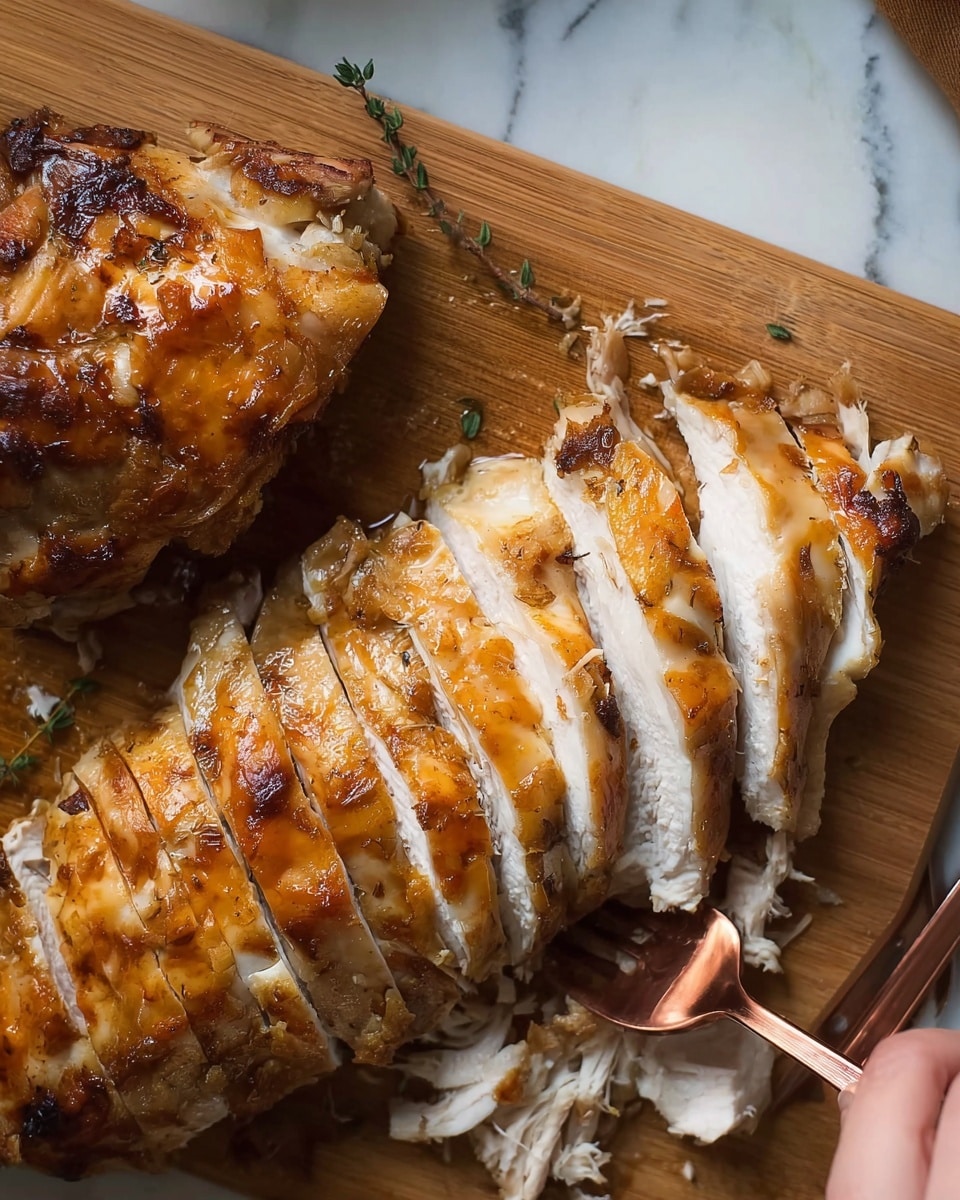
Garnishes
I love garnishing with fresh herb sprigs like rosemary or thyme for an earthy aroma and pretty presentation. A few lemon wedges on the side brighten up the rich flavor beautifully.
Side Dishes
My favorite sides for this crispy turkey are classic southern staples—creamy mashed potatoes, buttery green beans, and a tangy cranberry sauce to balance all that richness. Don’t forget some soft dinner rolls to soak up every delicious drip of juice!
Creative Ways to Present
For special occasions, I like to carve the turkey and arrange slices on a festive platter surrounded by autumnal fruits like apples and pomegranate seeds, adding color and a hint of sweetness to each bite.
Make Ahead and Storage
Storing Leftovers
After the feast, I wrap leftover turkey tightly in foil or store in airtight containers and keep them in the fridge. It stays juicy and tasty for up to 4 days—perfect for quick lunches or sandwiches.
Freezing
To freeze, I slice the meat off the bones and pack portions into freezer bags. It freezes well for up to 3 months. Just thaw overnight in the fridge before reheating for a convenient, delicious meal later on.
Reheating
For best results, I reheat turkey slices in a skillet over medium heat with a splash of broth or water to keep things moist. Microwaving can dry out the meat, so the stove method is my go-to for thawed leftovers.
FAQs
-
Is it safe to deep fry a turkey at home?
Yes! Deep-frying a turkey is safe if you follow all safety precautions—make sure your turkey is completely thawed and dry, fry outdoors on a stable surface away from structures, and monitor oil temperature carefully to prevent accidents.
-
How long does it take to fry a 12-pound turkey?
Usually about 25 to 30 minutes at 325°F to 350°F. Always use a food thermometer to confirm the internal temperature reaches at least 145°F in the thickest part of the breast for safety and perfect doneness.
-
Can I use other oils besides peanut oil?
While peanut oil is best for its high smoke point and mild flavor, you can use other oils like canola or sunflower. Avoid oils with low smoke points like olive oil to prevent burning and off flavors.
-
Do I need to brine or marinate the turkey before deep frying?
Not necessarily. The basic deep-fried turkey recipe works beautifully without brining. However, a quick brine can add extra flavor and moisture if you have extra time, but be sure to dry the turkey very well afterward.
Final Thoughts
I absolutely love how this Basic Deep-Fried Turkey Recipe transforms a humble bird into a showstopper with skin so crispy it’s almost addictive and meat so juicy it melts in your mouth. When I first tried deep-frying, I was surprised at how quick and rewarding it was—and that crispy skin? My family still raves about it every holiday. So, if you want to impress without fuss and enjoy an unforgettable turkey experience, give this recipe a try—you’ll enjoy every bite and bragging right that comes with it!
Print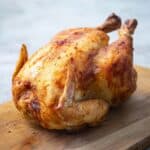
Basic Deep-Fried Turkey Recipe
- Prep Time: 10 minutes
- Cook Time: 30 minutes
- Total Time: 40 minutes
- Yield: Serves 8 to 12
- Category: Main Course
- Method: Frying
- Cuisine: American
Description
A classic recipe for deep-fried turkey, delivering a succulent, juicy bird with crispy skin. This method uses peanut oil heated to the perfect temperature to cook the turkey quickly and evenly, resulting in a flavorful and tender main dish ideal for gatherings.
Ingredients
Turkey
- 1 turkey, about 12 pounds (5.5kg), giblets removed, patted dry
Oil
- 2 to 4 gallons (7.8 to 15L) peanut oil
Seasonings
- Kosher salt, to taste
- Freshly ground black pepper, to taste
Instructions
- Prepare the Turkey and Oil: If using an outdoor frying rig, place the turkey on the rig according to the manufacturer’s instructions with legs pointing down. Add water to the empty frying vessel, measuring as you go, until the turkey is barely submerged. Remove turkey and pat dry thoroughly with paper towels. Discard the water and dry the frying pot well, then fill it with the same amount of peanut oil.
- Heat the Oil: Ignite the turkey fryer and heat the oil to 350°F (177°C). Once reached, turn off the gas completely.
- Lower the Turkey: Slowly and carefully lower the turkey into the hot oil, a process that should take at least 1 1/2 minutes to avoid splashing or burning. When the turkey is fully submerged, reignite the fryer and adjust the flame to maintain a steady temperature between 325°F to 350°F (163°C to 177°C).
- Fry the Turkey: Fry the turkey until an instant-read thermometer inserted into the coolest part of the breast registers 145°F (63°C). This usually takes about 25 minutes for a 12-pound bird.
- Remove and Rest: Carefully remove the turkey from the oil and allow excess oil to drip back into the pot. Transfer the turkey to a clean disposable aluminum tray or rimmed baking sheet. Season generously with kosher salt and freshly ground black pepper. Let the turkey rest for at least 10 minutes before carving and serving.
- Indoor Fryer Option: If using an indoor turkey fryer, add oil without surpassing the maximum fill line and preheat to 350°F. Fry the turkey following the manufacturer’s instructions, monitoring oil temperature closely. If the temperature drops below 300°F (150°C), remove the turkey and wait until the oil reheats to 350°F before continuing. The frying time and resting instructions remain the same.
Notes
- Deep-frying a turkey requires careful attention and safety precautions due to the large quantity of hot oil involved.
- Always follow the instructions provided with your turkey fryer to prevent accidents.
- The result is a juicy turkey with exceptionally crispy skin, much like the texture of potato chips.
- Ensure the turkey is completely dry before lowering it into the oil to avoid dangerous oil splatters.
- Never leave the fryer unattended during use.
Nutrition
- Serving Size: Per serving (approximate for 12 servings)
- Calories: 884 kcal
- Sugar: 0 g
- Sodium: 44 mg
- Fat: 97 g
- Saturated Fat: 17 g
- Unsaturated Fat: 80 g
- Trans Fat: 0 g
- Carbohydrates: 0 g
- Fiber: 0 g
- Protein: 5.4 g
- Cholesterol: 21 mg

